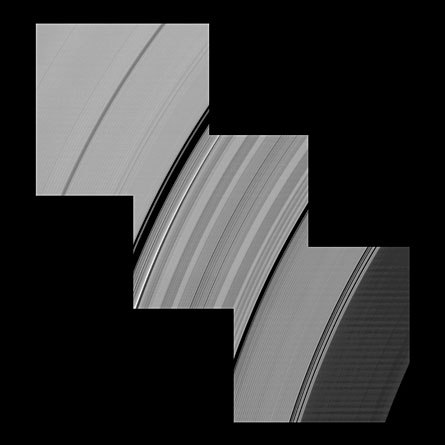The Cassini spacecraft has for the first time captured portraits of Saturn at equinox, illuminating previously unknown structures in the icy rings that girdle the planet’s equator. The rings, once thought to be paper-thin, undulate, have ruffles and contain bumps as tall as the Rocky Mountains, according to analyses of images that NASA released on September 21.

At equinox, which occurs once every 14.8 Earth years, the sun lies directly over the planet’s equator. In this configuration, sunlight hits the rings precisely edge-on. A few months before and after this alignment, the light skims the ring plane, causing the rings to all but disappear while brightening structures that stick out of the plane.
Some of the newly released images show elevated clouds of tiny ice particles. Saturn’s orbital motion has smeared the clouds into streaks some 5,000 kilometers long in the planet’s A and C rings. From closest to farthest distance from the planet, the rings are D, C, B, A, F, G and E.
Cassini scientists suggest that the bright clouds were created when small interplanetary debris—either comets or meteorites—rained down on Saturn’s rings. The brightness and size of the streaks suggests that each piece of debris had a diameter of about 1 meter, scientists report.
Cassini researcher Matthew Hedman of Cornell University says he was surprised and mystified to find that a spiraling undulation, discovered three years ago as a 500-kilometer-long structure in the D ring, extends 17,000 kilometers through the entire C ring. Previous theories, which suggested that debris colliding with the D ring caused the corrugation, can’t explain the phenomenon “over such a broad region,” Hedman says.
Equinox-like lighting conditions could last another few months and may reveal additional surprises, he says.







